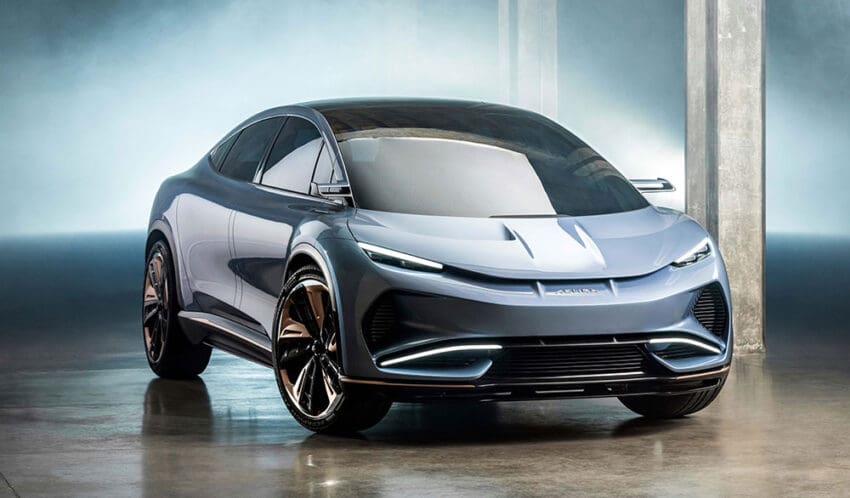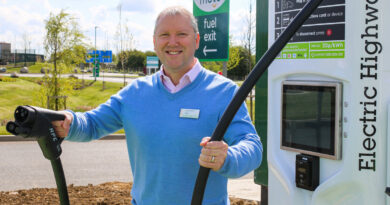Introducing AEHRA
Meet the men behind AEHRA, the new, Italian challenger brand that is aiming to redefine the image of electric vehicles.
We got to speak to Hazim Nada, the founder and CEO of AEHRA, and Filippo Perini, the iconic designer that created this fully-electric, ultra-premium SUV.
Q: Take us through the journey of AEHRA so far – What was the initial inspiration behind the company? Have you had any challenges?
Hazim: It’s had many challenges. Every step has and has had its challenges. First was really trying to make substance of the core idea that we had. The feedback that we were getting were many people telling us “don’t do it, don’t do it, it’s a very difficult market, very difficult sector. The best way to make money in the in the automotive sector is to start with a lot of money and lose half of it.” That was the feedback by many people, obviously, but we had the strong belief that what we were doing was different, that we had to see this change happen, and the more and more we kept going, the more we validated these ideas.

Q: What makes this car so different to anything on the market today?
Hazim: Design language. The emotionality the exterior expresses, the resulting cabin space and the materials that then translate both in energy savings and also in vehicle dynamics. This is a vehicle that can act as a supercar and performance wise, but at the same time can act as an autonomous saloon when you need it to. So the type of usages that any type of customer would want to have in any type of vehicle, I think are summarized in this.
Q: Filippo, as the head of design for AEHRA, what are some of the key design principles that you can see when you look at this car?

Filippo: First, the concept was to build the car. Hazim is a pilot, and he comes from a aeronautics field and he told us: “I dream a car that is made with a wing profile shape.” We we were starting from this, and you can recognize this initial concept in the car.
It is built around a single line in the silhouette. This is also very innovative and modern, but also used it in the past many times; we are the first to put in production this kind of a concept. What is important to say is that this is not a concept; it’s the car that is ready to be produced. The team did not do a concept car just for the motor show, just for fun, and not to test the design languages – We are doing cars that can be produced.
Q: Hazim, talk to us about the cars performance. What can we expect in terms of range, charging and power?
Hazim: We’re targeting a power output between 550 and 600 kilowatts that will be addressed by either two axles or three axles. The vehicle will have full torque vectoring even with two axles because of the fact that we have rear steering with the long wheelbase that we’ll have to have rear steering, which means that even with two axles, we’ll be able to have full torque vectoring.Having said that, the choice between 550 or 600 is primarily down to the and supplier that we’ll be signing up with in terms of range. Our target range is 800 kilometers. This is a result of primarily the weight savings that we’re doing along with the aerodynamics that we’ve put in place, the materials that we’re using allow us to have significantly lighter vehicles compared to the traditional EVs in circulation of their size, and also properties of vehicle dynamics in terms of torsion and structural strength.
Listen to Hazim Nada and Filippo Perini talk exclusively to Charlie Atkinson on the Everything EV Podcast
Q: Hazim, you said before that you believe the design of a car will become one of the most important factors for a prospective customer when it comes to buying a car. Why is that?
Hazim: What you’re seeing today is the beginning of the transition. There are many vehicles in circulation. There are many vehicles in development. But what you take out of all the process that’s going on is an ecosystem of powertrains and ecosystem of components that are already reaching the typical limit of potential usage of any type of customer. You have vehicles in circulation with thousands of horsepower, with 800 kilometers range. Once these numbers begin to be mainstream and you develop a third-party ecosystem of such components, what does the customer look for when anybody can pick and choose components to make a system that can fit into these numbers? It’s all the other elements that make the difference. It’s the design. It’s the emotions you get out of the vehicle. It’s the fact that when you want to drive it, you can drive it like you really want to drive it. When you don’t want to drive it, you can have a system in place that assists you to the drive, but you also have a saloon experience in the in the vehicle. It’s all these elements that need to be addressed because all the rest of the elements are already being addressed.It’s fairly senseless to have 1.9 seconds accelerations when you’re driving a three tonne vehicle or a two and a half tonne vehicle that significantly under-brakes, for example, you have all sorts of safety issues to address as well. These numbers were always numbers of the hypercar segment where you maybe have five cars per year in production or maybe ten cars per year in production. Imagine a market where hundreds of thousands of vehicles in circulation have zero 0 to 60 below two seconds. It also becomes an issue of regulation. We think sooner or later the regulators will have to step in and address these issues. The past fights between the supercar producers for the last 10-15hp is completely gone now in the electric system, as it’s very, very simple to have an additional 200 horsepower with a simple electric motor that you can find off the shelf with dozens and dozens of suppliers. So stacking up power is really simple in the EV segment. And is that the direction the market should go into? Once you’ve reached the emotions of the customer needs, there are other elements that you need to address.
Q: Filippo, you have designed some iconic cars across you career. Where does the AEHRA rank in your portfolio?
Filippo: It absolutely is the best of the SUVs we’ve designed because it’s the most advanced one. Probably the sedan will be the best of the sedan’s I have designed. The best car will always be the next one. Every designer knows it is a never-ending story. So when there is another project, you have the chance to do something perfectly, but you will not, so you wait for the next one!






